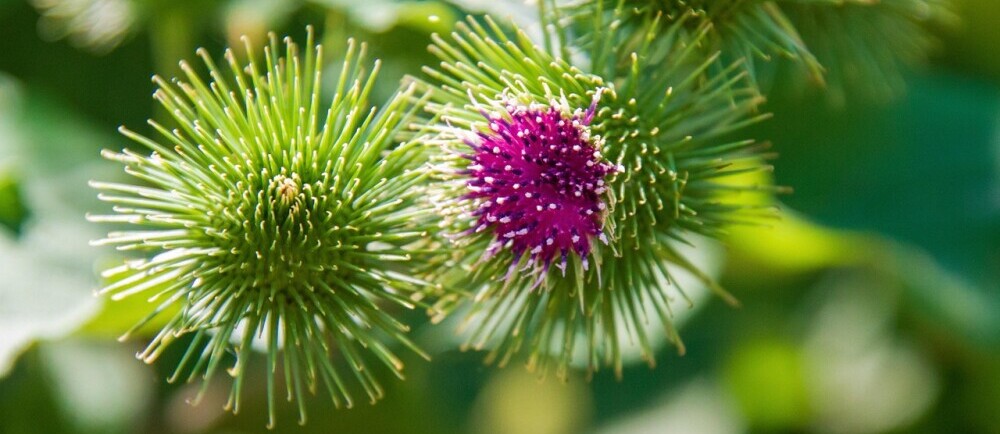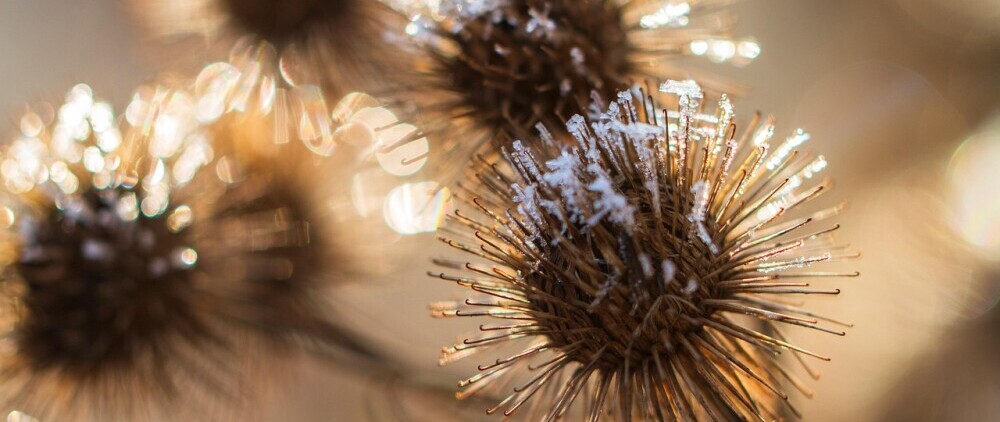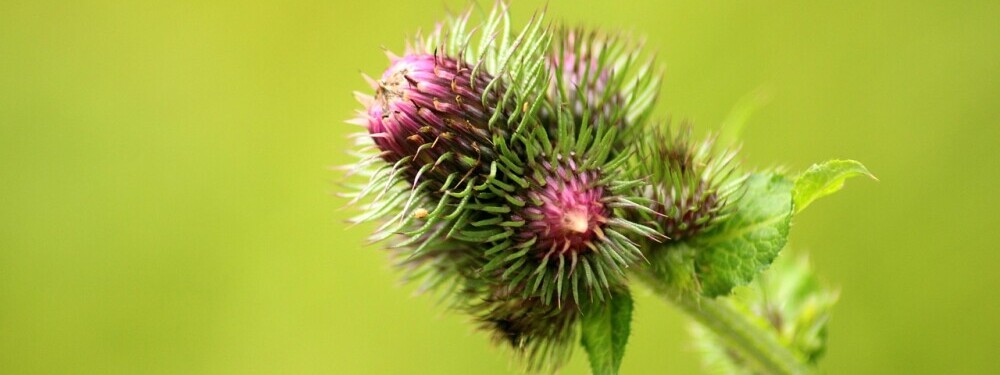
BURDOCK ROOT
Arctium lappa , commonly called greater burdock, gobō
Burdock, frequently regarded as a weed, is among the most beneficial medicinal plants. All components of the plant—roots, leaves, and seeds—possess significant medicinal value.
Burdock root is a pretty fascinating plant, known by different names in various corners of the world. In Japan, it’s known as Gobo and holds a special place in local cuisine. Head over to France, and people call it Bardane, using it as an herbal remedy. Each name carries a bit of the cultural history tied to that region.
Other names for Burdock
Nicholas Culpeper ( Born 18 October 1616
Ockley, Surrey, England – Died 10 January 1654), son of Nicholas Culpeper (senior), a cleric, was introduced to the world of medicinal plants and herbs by his grandmother. He became an English botanist, herbalist, physician and astrologer and gave the following as popular names for burdock during his time: Personata, Happy Major and Clot-Bur. Other common names Burdock is known by are Lappa, Loppy-major, great Burdock, Fox’s Clote, Thorny Burr, Beggar’s Buttons, Cockle Buttons and Love Leaves. Some of the old English name for the Burdock was Herrif, Aireve, or Airup. This is from the Anglo-Saxon hoeg (a hedge), and reafe (a robber) – or the Anglo-Saxon verb reafian meaning, to seize.
Culturally, burdock root has woven itself into traditional medicine practices globally.
A Deep Dive into Burdock Root Benefits
Over time, folks have discovered various health perks associated with this root. It’s seen as a strong detoxifier, often used to cleanse the blood and improve liver health. Its natural diuretic properties might help flush out waste from the body, making it a top choice for detox enthusiasts.
The anti-inflammatory effects of burdock root can’t be overlooked either. People have been using it to tackle inflammation-related issues, hoping for some relief from conditions like arthritis. It’s also credited with promoting skin health, thanks to its potential to clear up acne and eczema.
Adding the root to your diet could offer digestive support too. Its natural fibers help maintain a healthy gut, which is crucial for overall well-being. Plus, it might provide a gentle boost to your immune system, helping fend off pesky illnesses.
When incorporating burdock into your regimen it is wise to ask a heath professional for its dosage or follow the directions on the package..
Tracing the Roots: Ancient Use of Burdock Across Civilizations
Burdock root has quite a story stretching back through the ages, playing a significant role in a variety of ancient cultures. From traditional Chinese medicine to Native American healing practices, this herb has been a staple for its perceived health benefits.
In ancient China, burdock root was prized for its ability to cool down overheating in the body. It was used in herbal concoctions aimed at treating colds, flu, and even throat infections. The Chinese recognized its potential as a blood purifier, leveraging its detoxifying abilities to boost vitality and fight off toxins.
Meanwhile, Native American cultures held burdock in high regard, utilizing it to manage ailments ranging from arthritis to skin issues. They would often create pastes or teas, believing in its natural healing properties to mend wounds and promote general wellness.
Medieval Europe had its own love affair with burdock. The herb was commonly used as both food and medicine. Monks and herbalists touted it as an effective remedy against a host of ailments, particularly those linked to the skin. Given its usage as a blood purifier, burdock was often turned into tonics to fight various skin conditions.
These ancient applications highlight the enduring legacy of burdock root as an herbal remedy, a testament to its versatility and esteem in traditional medicine across the globe. This historical context provides valuable insight, helping us understand how this humble root evolved into a beloved staple in modern herbal practices.
In the Middle Ages, English herbalists favored burdock root over sarsaparilla for treating boils, scurvy, and rheumatism.
In Japan, burdock is grown as a vegetable.
If you’re looking to channel some of these traditional uses today, it might be worth exploring how different preparations align with your dietary and health goals, always keeping an eye on safety and personal tolerance.
Who’s at Risk? Contraindications to Consider
Burdock root might sound like a natural wellness elixir, but it’s important to know it’s not for everyone. Potential users should be mindful of a few contraindications.
Allergic reactions can occur, particularly for those allergic to daisies, chrysanthemums, or ragweed. If you’re prone to allergies, a patch test or small dose may help gauge your reaction before diving into regular use.
Interacting with other herbs and medications is another concern. Burdock acts as a diuretic, so it might enhance the effects of other diuretics or interact with medications processed by the liver. If you’re on prescription meds, consulting with a healthcare provider is a smart move.
Special populations also need caution. This includes pregnant or breastfeeding individuals, as there’s a lack of substantial research confirming the safety of burdock in these situations. Also, those with bleeding disorders or scheduled for surgery should be wary, as it could potentially affect blood clotting.
Being informed about these risks helps in making educated decisions about burdock use. It’s all about ensuring it fits well within your personal health landscape and minimizing any potential mishaps.
If you’re considering adding burdock to your routine, discussing it with a healthcare professional can provide personalized advice tailored to your individual health needs.
Navigating the Side Effects: What You Need to Know
While burdock root has its fair share of fans, it’s important to navigate the potential side effects that might accompany its use. Digestive issues can pop up, such as stomach upset or nausea, especially if you’re trying the root for the first time or taking higher doses.
Some folks might experience a rash or allergic skin reaction, if they’re sensitive. Paying attention to your body’s signals can help catch these reactions early. Discontinue use and reach out to a healthcare provider if you notice any troubling side effects.
Prolonged use of burdock might also lead to electrolyte imbalance due to its diuretic properties. Staying hydrated and monitoring how you feel can help mitigate these effects. If consuming the root in larger amounts, regular consultations with a healthcare professional might be a good idea to ensure that everything stays in balance.
When considering side effects, personal experience and how one’s body responds play a big role. Starting slow and adjusting based on any reactions can aid in safer usage. Listening to expert herbalists and community experiences shared online can provide additional insights into managing these effects wisely.
Safe Consumption: A Step-by-Step Guide
Kicking off your burdock journey requires knowing how to safely incorporate it into your routine. Start with understanding the recommended dosages. If you’re going the supplement route, always follow the label’s guidance or consult with a professional to avoid any hiccups.
Exploring the different forms of burdock can be quite an adventure. You’ve got options ranging from fresh roots to powdered supplements, and each comes with its preparation style. Fresh burdock root, for instance, can be sautéed or added to soups for a healthy kick. Meanwhile, dried root or supplements can make for a convenient choice for those constantly on the go.
Proper preparation and storage play crucial roles too. Keeping fresh roots in the fridge or storing dried forms in a cool, dry place maintains its quality. Safe storage ensures you’re always getting the best out of your herb, preserving its potency over time.
Learning from seasoned herbalists can provide extra tips, like matching burdock with complementary herbs, which might enhance its effects without upping risks. Staying informed and cautious is the best approach. The goal is embracing the benefits of burdock root while sidestepping any pitfalls, paving the way for it to support your health journey effectively.

Conclusion
Although not scientifically substantiated, it is traditionally believed that….
The roots possess significant detoxifying properties, frequently referred to as ‘blood cleansing’. Burdock facilitates the liver’s detoxification and elimination of toxins from the body. Burdock is frequently administered as a supportive treatment for dermatological conditions, including acne, psoriasis, and eczema, yet its efficacy can be applied more extensively in instances where systemic cleansing is warranted. The root is abundant in inulin, regulates gallbladder function, and is beneficial for diabetes and liver disease. The combination of burdock and nettle root serves as an effective hair tonic that promotes hair growth and alleviates dandruff. The leaves are especially therapeutic when applied externally as a wash or poultice for poorly healing wounds, ulcers, and skin rashes.
In folk magic, Burdock was regarded as a potent herb capable of safeguarding homes and stables, and it was utilized in transfer magic. Its robustness suggested a superior capacity to endure diseases compared to a frail human. Due to sympathetic magic, it was regarded as a magical remedy that promotes hair growth.

